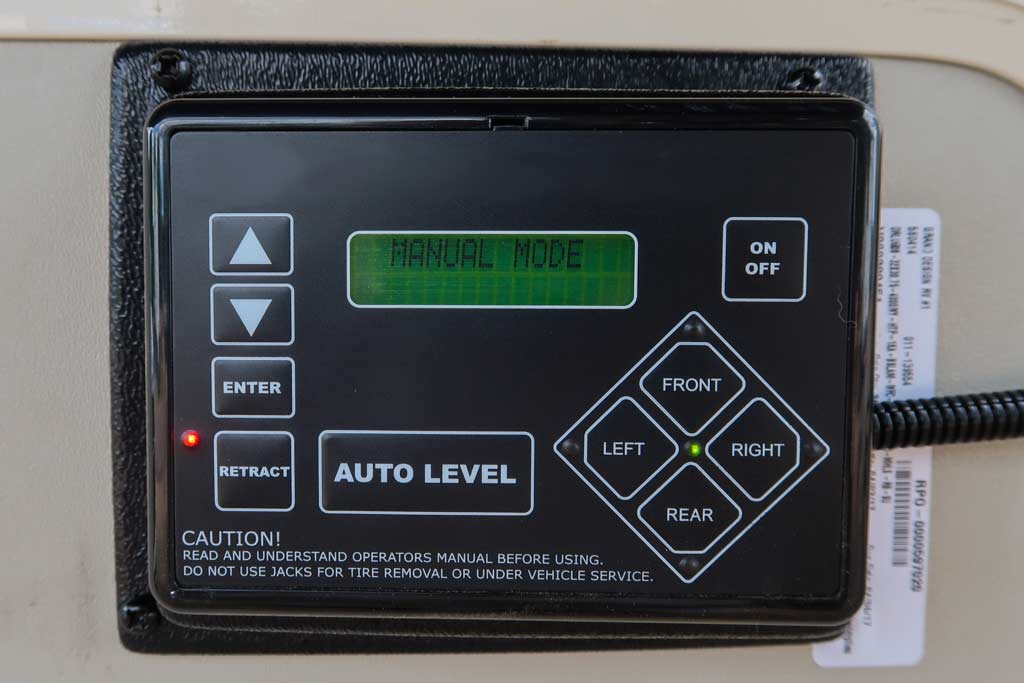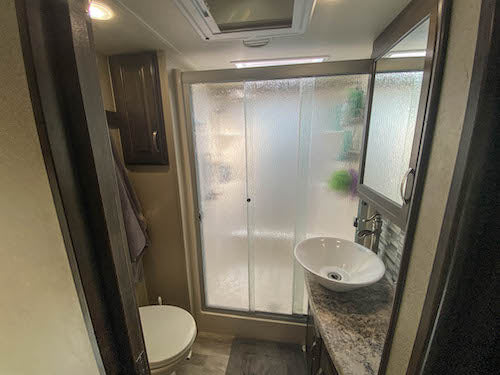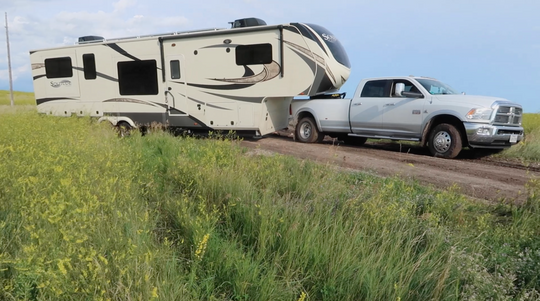Article Content
By: The Getaway Couple Rae & Jason
Nothing can create that sinking feeling in your stomach quite like pressing the button to operate your leveling jacks and having nothing happen. That can make for a bad start to a trip or it can provide a terrible ending to an otherwise fun getaway. Whether your jacks are stuck up or down can make a big difference in the criticality of the fix.
If you are in a motorhome and your jacks are stuck in the raised position and will not lower, this will not necessarily ruin your trip. Obviously, you will want to address the issue as soon as possible and get things corrected. If you are parked on a fairly flat lot, then the issue will be more of an inconvenience than a showstopper. You can probably go ahead and enjoy your trip and address the repair when you return home. However, if you have a towable and your jacks will not lower, this means you are unable to unhitch and set up camp.
On the other hand, if your leveling jacks are stuck down and will not retract, then you have a more immediate problem in front of you. You cannot move or drive the RV with the jacks down, so you have to get this fixed right away. You will likely be under a time crunch as someone else may be scheduled to camp in that same spot later in the day.
First, if you are scheduled to check out that day, you should notify the campground office of your issue. Most RV parks are mindful of these kinds of issues and will be willing to work with you on scheduling. In the meantime, you should take these 5 steps to troubleshoot your RV hydraulic leveling jacks so that you can get back on the road.
1. Perform Basic Tests
This step may seem pretty basic, but it can help get you started in the right direction. There are some things that you can easily observe that will assist in the troubleshooting. First, when you press the button, do you hear anything? If you don’t hear any noise, it could be a power-related issue. It may even be as simple as a blown fuse. However, if you hear the jacks attempting to operate but nothing is happening, it’s likely a more complicated mechanical issue.
Attempt to operate the jacks independently to see whether you have a problem with the whole system or whether it is limited to the front jacks or rear jacks. You may even be able to narrow it down to one single jack that is causing the issue. Once you’ve performed some basic testing at the control panel, it’s time to take a deeper look.

2. Visual Inspection
Walk around the RV and put eyes on each of the jacks to determine if there are any obvious issues preventing you from getting the jacks retracted. Look closely to see if there is any hydraulic fluid leaking anywhere as well. If the temperatures are below freezing, you can pour some warm water on the base of the jacks to make sure they aren’t frozen to the ground. If you still can’t figure out what’s causing the problem, move on to the next step.

3. Read the Owner’s Manual
Your owner’s manual contains detailed information about the operation of many components of your coach, including the jacks system. While you may have read up on the manuals when you first picked up your rig, now would be a great time for a refresher. We keep our owners manual in the back of our truck for easy access. The manual will walk you through detailed troubleshooting steps that can assist you with tracking down the issue. You should be able to use the results of the testing you did previously to walk through the troubleshooting chart and determine the likely causes of the problem.
If you’re in a time crunch and need to vacate a site, you may have to explore temporary fixes. Your owner’s manual can also walk you through the manual retract process for your jacks. We used our manual to learn how to manually retract our jacks when our fuse blew once. Since each system, such as HWH, Lippert, and Quadra Bigfoot, has its own specific procedures, it is important to refer to the manual for your particular system.

4. Perform Manual Retract
Most hydraulic leveling jacks found on RVs today are HWH systems. These systems typically have a manual override that will allow you to retract the jacks in order to get your rig to a repair shop. This usually involves opening the manual release valve and then manually prying the jacks up.
If you make it to this step, be sure you take all proper precautions to avoid injury. Never put yourself or anyone in a position under the vehicle when attempting to manually retract the jacks. Once you’ve gotten the jacks retracted, leave the release valve(s) open until you get to the repair shop. Searching online for your specific model number should quickly show you exactly where your release valves are located.

5. Ask for Help
If you’ve made it this far and still can’t get things fixed, know when to call for help. This could be as simple as asking around the campground and finding someone more familiar with the hydraulic jacks who can assist. Almost all manufacturers have a direct customer support line and some will be able to walk you through a fix over the phone.
Additionally, roadside assistance programs like AAA or Good Sam have telephone helplines available so that you can speak to a certified RV tech to help you with issues. You may also consider asking the campground office for a referral to a mobile tech who can come out and address your problem. Either way, don’t be afraid to ask for help when you need it.

If you’ve camped long enough, you have probably encountered an issue that you didn’t know how to resolve. The RV community is great about helping others because they’ve all been there at one time or another. We are so thankful for the kind strangers that have helped us on the road and are always willing to return the favor.
Following these steps for troubleshooting your hydraulic jacks should make things a little easier for you when problems arise. Even if you are unable to fix the root problem yourself, you should be able to do enough to get moving and have a professional take a look at things.
Interested in making you leveling experience better? Check out RV SnapPads here












